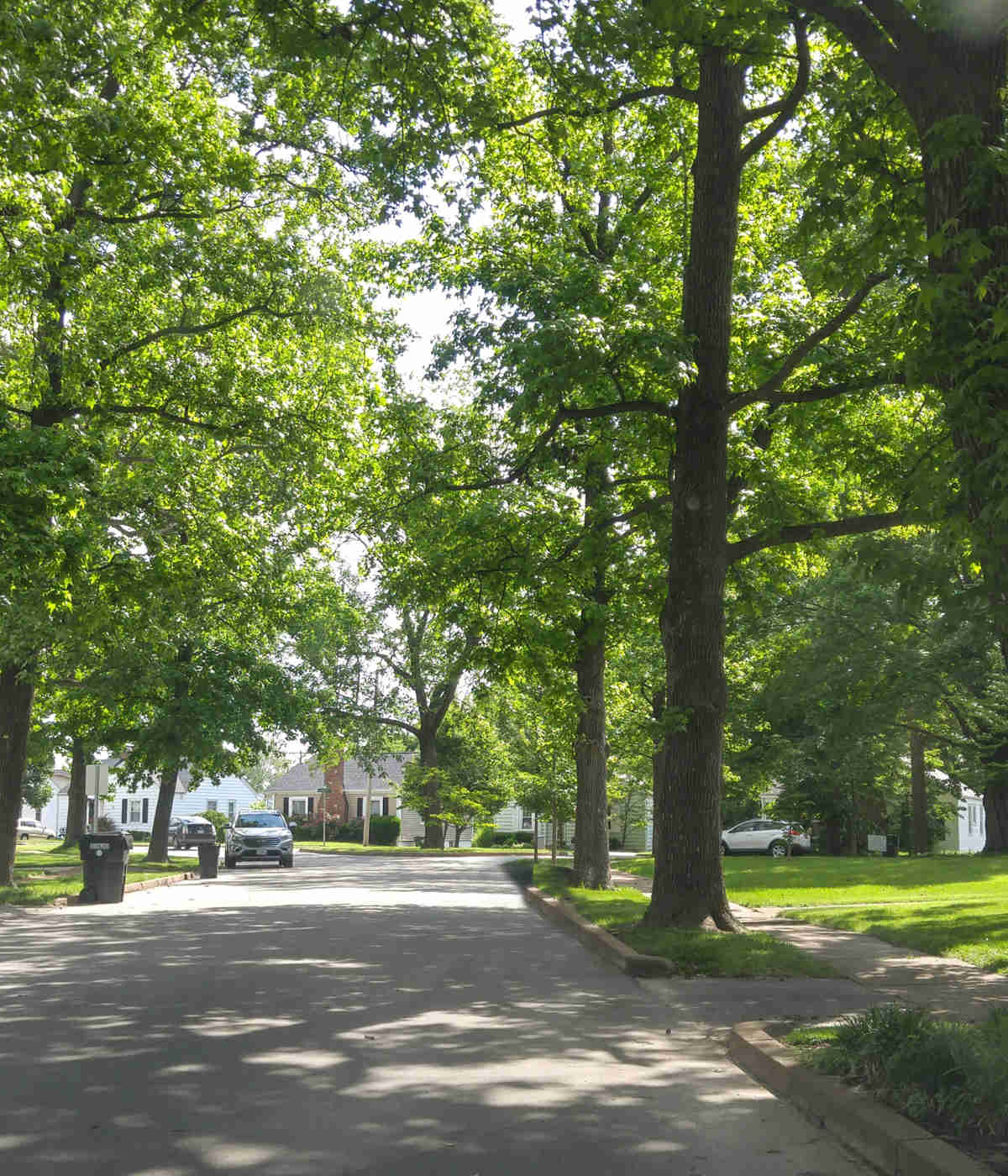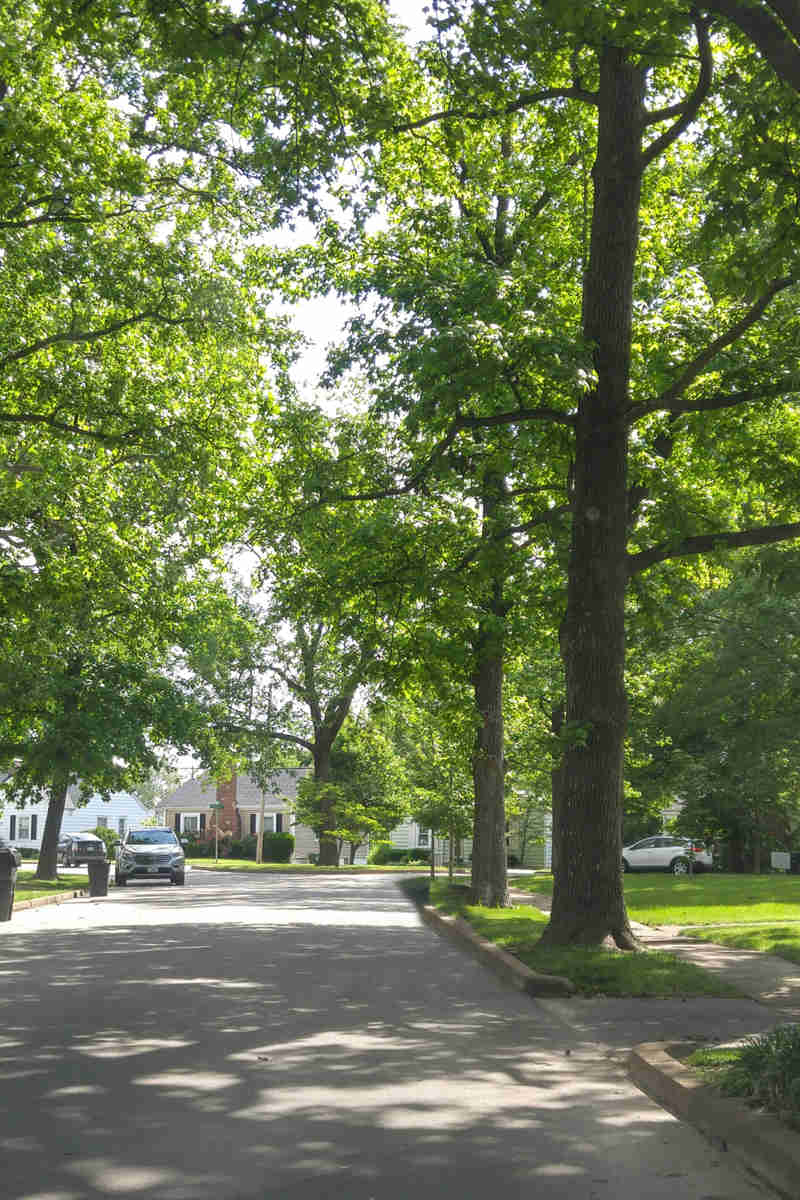Fall offers the perfect conditions for root development, like cooler air, warm soil, and more consistent moisture . But improper planting techniques can set a tree up for years of stress or failure, regardless of the conditions in which your tree is planted.
Knowing common tree planting errors and how to avoid them can ensure your tree’s longevity. This guide walks through the most common mistakes for fall tree planting in Massachusetts and how to avoid them.
Mistake #1: Planting Trees Too Deep or Too Shallow
The first step in planting is knowing how deep to plant a tree in Massachusetts. Root collar depth is the most common planting error for New England homeowners. Planting a tree too deeply and burying the root flare restricts oxygen, encourages root girdling, and increases the risk of diseases. Too shallow, and the roots dry out or become unstable.
You know you’ve gotten it just right when you see the first major root above the soil line. Ensure the tree is tapered into the ground, rather than resembling a telephone pole, and be aware that you may need to remove some soil from the top of the root ball if purchasing a tree from a nursery.
Mistake #2: Choosing the Wrong Tree for Your Site
Massachusetts has a unique soil and climate profile. Clay soils, acidic soil in the Berkshires, and sandy coasts can make species selection difficult. Avoid trees that are vulnerable to salt, wind, or early frost without knowing the proper places for them. Here are some examples of commonly mismatched tree species and locations:
- White pines in high salt zones – White pines are highly susceptible to damage from soil-borne salt and salt spray. A salty environment can cause browning needles, branch death, and, in some instances, total failure.
- Shade preferences – Sun exposure affects a tree’s foliage density and flowering or fruiting characteristics. Proper sun exposure or shade helps a tree thrive.
- Trees requiring drainage in soggy spots – Waterlogged soil displaces air pockets that some tree species need to get oxygen to their roots. Without these air pockets, roots can be suffocated, causing them to decay and die.
Mistake #3: Skipping Soil Testing or Site Prep
Compacted soils, poor drainage, and pH imbalances are widespread across New England. Soil testing before planting trees in Massachusetts ensures your trees thrive. Without testing, your tree may suffer from nutrient lockout or root suffocation.
Test for pH and compaction. If needed, contact your local arborist to amend or aerate your soil before planting.
Mistake #4: Over- or Underwatering Newly Planted Trees
While fall can bring increased rainfall, the wet weather can be deceptive. While it may seem like your trees are receiving enough water through rainfall alone, newly planted trees need more than you think. But not too much! New roots still need consistent deep watering to survive. On the flip side, poor drainage and overwatering can cause root rot.
Five to 10 gallons of water per week per inch of trunk diameter is the sweet spot. Use a soaker hose rather than lawn irrigation to water your trees, and make sure to water until the ground freezes. To check your area’s drought conditions, use the drought monitor by the University of Nebraska – Lincoln.
Mistake #5: Using Too Much Mulch
Mulching is an effective way to retain moisture and provide essential nutrients to your newly planted tree. But like watering, there’s a right and wrong way to mulch. Mulch volcanoes are a major mistake. When mulch is bunched around and touching the trunk, it can lead to pest infestations, fungal issues, and rot.
It’s best to apply 2-4 inches of mulch in a donut shape around your tree and away from the trunk.
Mistake #6: Pruning Too Soon After Planting
While routine pruning is a great practice, pruning too soon can be problematic. Fall-planted trees need to conserve energy to establish roots, not recover from pruning wounds.
During this delicate time in a tree’s life, only remove dead and damaged limbs. Save structural pruning for the following late winter or early spring when the tree is more established.
Trees That Thrive in Massachusetts Fall
Particular tree species tend to fare better than others when planted in Massachusetts during the fall. Here are our recommendations for trees that thrive in Massachusetts fall:
- White oak
- Serviceberry
- Eastern redbud
- Crabapple
- River birch
The best time to plant trees in Massachusetts is before Columbus Day. This gives trees enough time to establish roots before the frost sets in.
At Hartney Greymont, we have both ISA- and Massachusetts-certified arborists located in Needham, Concord, Danvers, Cape Cod, and the surrounding areas to help with tree selection, site prep, planting, and post-planting care.
Contact Your Local Hartney Office Today!



